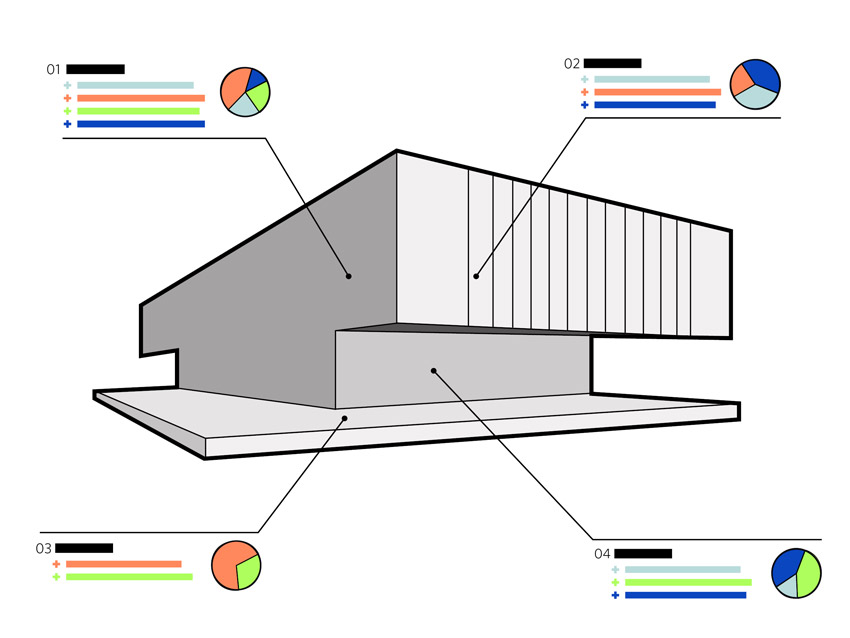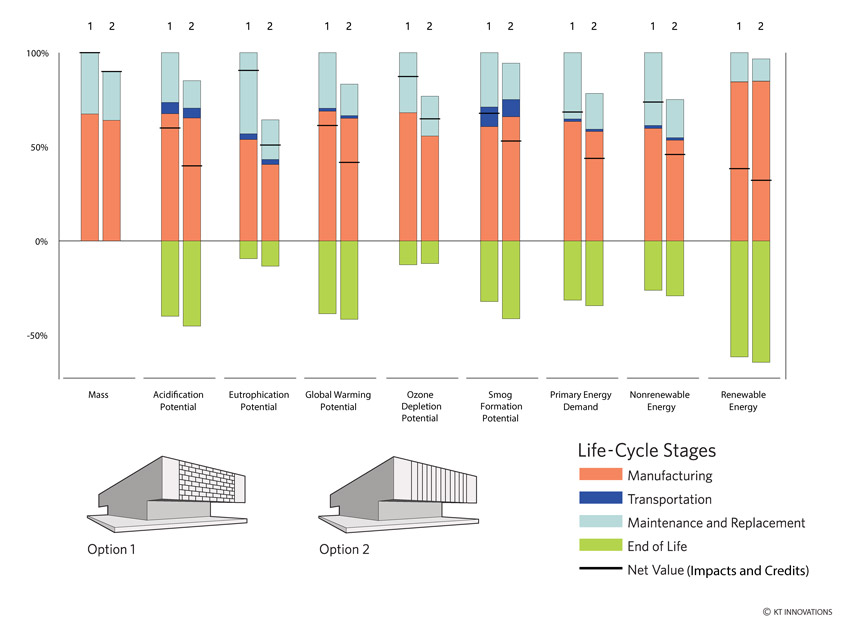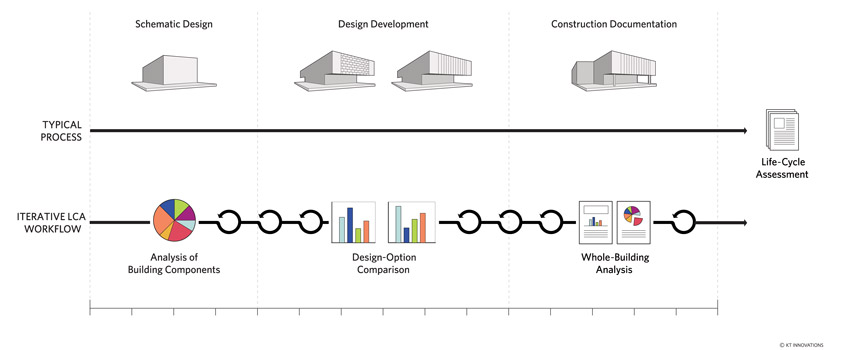Promoting Sustainable Design Through Life-Cycle Assessment Applications
LCA Challenges: Process and Benefits of Using LCA Software
As we’ve discussed, quantifying environmental embodied impact typically involves performing an LCA, which can be an unfamiliar and challenging practice for many architects. Until recently, there was no efficient means to evaluate environmental impact of materials during the design and planning process, when it can have the most influence on design decisions and building performance. An architect needs this impact data at the time of material selection, but the laborious process required for calculating embodied environmental impact across a broad range of design decisions prevents this from happening at the appropriate moment in the design process.
Solution
In principle, BIM should enable architects to acquire this information. In practice, however, BIMs are intended to facilitate construction documentation, which does not require the level of detail needed for generating the accurate bill of materials required for LCA. BIM-integrated life-cycle analysis addresses these challenges by allowing users to imbue each assembly with information about the architectural products it contains. For example, a Revit-integrated LCA software quantifies embodied energy along with other environmental impacts, such as emissions to land, air, and water. It can be used for whole-building analysis or for comparative analyses of various design options, and it can account for the diverse range of material classes defined in a BIM, as well as materials that are not modeled explicitly.
Furthermore, recovering materials in a building and reusing them on subsequent projects is a valuable asset. BIM-integrated LCA software can help in that process by providing a means to quantify the recoverable materials and therefore increase the ability to reduce the negative impacts of producing new building materials.

Image courtesy of KT Innovations
LCA applications help architects integrate life-cycle analysis into design by allowing users to define relationships between BIM elements and construction materials.
While working on a Revit model, a user can define relationships between BIM elements and construction materials from the BIM-integrated life-cycle analysis tool database. These relationships are used to quantify environmental impacts across several categories, such as embodied energy and global warming potential.
Using BIM software involves a process of optioning before the building design is fixed, with the designer defining assemblies, formulating questions about materials, and evaluating a variety of alternatives. By plugging into this iterative process, BIM-integrated life-cycle analysis tools allow architects to move from rule-of-thumb calculations of environmental impact to real-time assessments at pivotal moments. The tool facilitates the process of translating Revit materials into discreet building materials and quantities; it then generates a Bill of Materials for the full building or constituent parts, automatically updating quantities as the design changes (assuming materials stay the same, other than size and shape).

Image courtesy of KT Innovations
An output report from LCA software compares the environmental impacts of two design options across several categories.
An output report then summarizes the environmental impacts of the project, according to five of EPA’s TRACI impact categories and three Cumulative Energy Demand categories. The results can be broken down by life-cycle stage, Revit category, and CSI division. TRACI is the Environmental Protection Agency’s Tool for Reduction and Assessment of Chemicals and Other Environmental Impacts.
Once the Bill of Materials has been generated, the BIM-integrated life-cycle analysis tool draws environmental impact information associated with the manufacturing of those materials from the associated databases. It presents this data to the user—sorting, grouping, and displaying information to answer design and material-selection questions at hand. Unlike other environmental assessment tools, which tend to export data to unwieldy spreadsheets, the BIM-integrated life-cycle analysis tool allows users to produce data graphics that are readily comprehensible, transparent, and customizable. In this way, information that is normally abstract becomes very well defined, which allows for much more accurate and nuanced decision making.
Standards and Certifications
As LCAs of the built environment are accepted more and more as an element of sustainable design, most green building rating systems and schemes have incorporated LCA. It has become a given that LCA can play a big role within the overarching industry trend toward reducing the environmental impact of buildings. As previously discussed, energy codes have become more stringent and operations-related environmental impacts have dropped, thereby increasing the demand for LCA results. Updated rating systems, such as LEEDv4, reward project teams that utilize whole-building LCA via a new Materials and Resources credit. Some of the relevant standards and certifications are:
- ISO 14040-14044: 2006 for LCA, which is referenced by LEED.
- USGBC LEED v4: There are up to three LEEDv4 points achievable for LCA, plus an additional credit for exemplary performance and another for regional priority, where applicable. The software is an effective means of achieving the LEED credits for Building Life-Cycle Impact Reduction by leveraging the design model.
- Living Building Challenge certification, provided by the International Living Future Institute, is a rigorous proven performance standard for buildings.
- 2030 Challenge certification, which states that all new buildings, developments, and major renovations shall be carbon-neutral by 2030.










